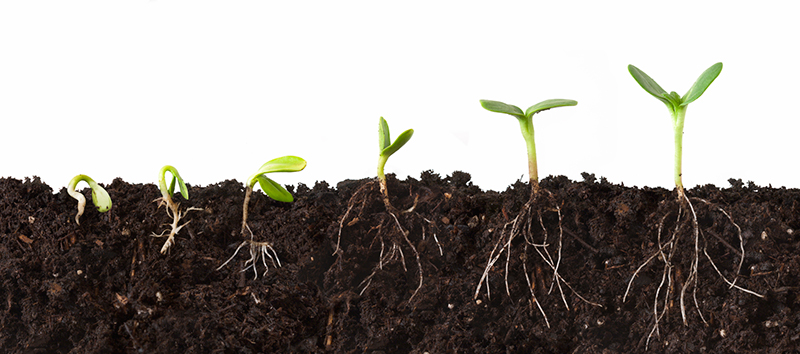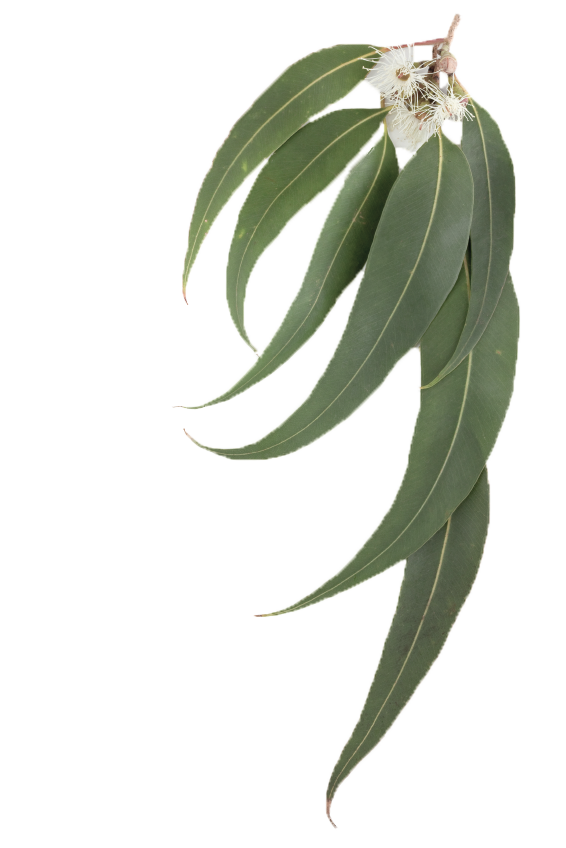Professor Scott Johnson
 Scott is a community ecologist working on insect–plant interactions, particularly on pest species.
Scott is a community ecologist working on insect–plant interactions, particularly on pest species.
He gained his PhD from the University of York in the UK and held a number of positions in the UK, including at the University of Reading and the Scottish Crop Research Institute (now The James Hutton Institute), before moving to Australia in 2011 to take up the position of Senior Lecturer.
His research group aims to identify novel approaches for managing pest species and preserving ecosystem services, based on a better understanding of how organisms within ecosystems interact.
This includes exploiting chemical signals used by insects to locate resources, enhancing biological control by increasing searching efficiency of the herbivores' natural enemies and using plant-microbes to help plants resist herbivore attack.
A major theme of the research involves understanding how atmospheric and climate change affects insect herbivores, especially in terms of ecosystem resilience, resistance breakdown in crops and disruption of behavioural interactions (e.g. predator-prey interactions, insect mutualisms).
By characterising multi-trophic interactions, particularly in response to global change, we identify vulnerabilities in ecosystems, but more crucially where resilience and the opportunities for adaptation lie...
Most recently Scott’s research group has focused on the functional role of silicon in plant biology, particularly in terms of enhancing plant protection from insect pests. Much of this research includes a climate change component.
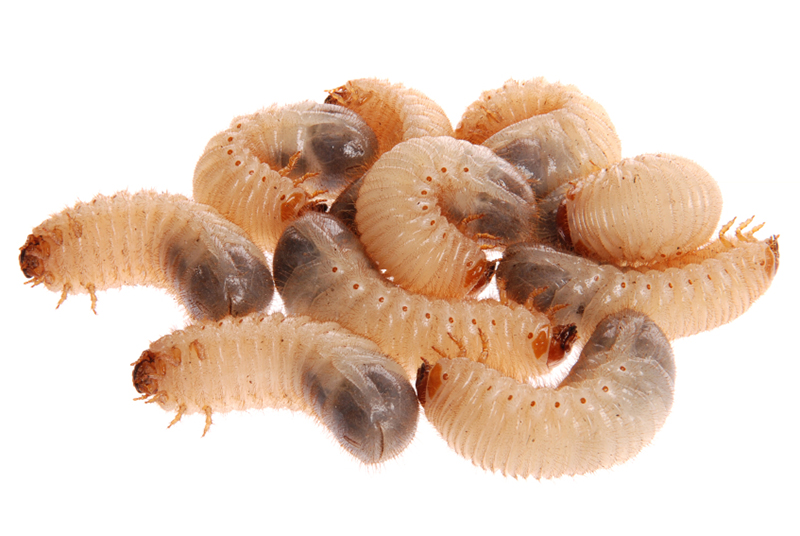
Our research is interested in root-feeding herbivores such as these Scarab Beetle larvae, and specifically how they interact with plants and influence defence responses under a range of environmental conditions.
Grants / Current Projects
Silicon: a novel solution to reduce water use and pest damage in wheat
Co-Researchers: David Tissue, Yolima Carillo
Partner/Funding Body: Australian Research Council Linkage
Period: 2023-2027
Period: 2023-2028
Assessing Plant Available Silicon uptake of different grades of Amorphous Silica when applied to Wheat (Triticum aestivum)
Partner/funding body: Agripower Australia
Period: 2022
Benefits from below: using silicon to alleviate drought and salinity stress in wheat
Co-Researcher: David Tissue and Zhonghua ChenPartner/Funding Body: Agripower Australia Ltd and WSU Research Partnerships
Period: 2021
Period: 2019-2022
Port Augusta QFly Sterile Insect Technology factory pilot operation
Co-Researchers: Markus Riegler, Ian Anderson, James Cook and John Hunt
Partner/funding body: Horticulture Innovation Australia
Period: 2019-2022
Down to earth defence: unlocking soil-derived defences for plant protection
Co-Researcher: David Tissue and Susan Hartley
Partner/funding body: Australian Research Council Discovery
Period: 2017-2019
Time to prime: using silicon to activate grass resistance under higher CO2
Partner/funding body: Australian Research Council Future Fellowship
Period: 2017-2021
Period: 2016-2017
Co-Researcher: James Ryalls
Partner/Funding Body: British Ecological Society
Period: 2015
How increased atmospheric carbon dioxide concentrations affect aphid-ant mutualisms: turning bodyguards into assassins?Partner/Funding Body: British Ecological Society
Period: 2015
Exploiting soil microbe associations with sugarcane roots for resistance to canegrubs
Co-Researcher: Jeff Powell, Peter Allsopp and Nader Sallam
Partner/Funding Body: Sugar Research Australia
Period: 2014-2016
Get tough, get toxic or get a bodyguard: How root herbivores shape grass defences
Co-Researcher: Ben Moore
Partner/Funding Body: Australian Research Council Discovery
Period: 2014-2016
Drought, deluge and diversity decline - How do root herbivores affect grassland resilience to predicted changes in rainfall patterns?Co-researcher: Sally Power
Partner/Funding Body: Hermon Slade Foundation
Period: 2013-2016
Grazing in the dark - how will climate change affect root-feeder impacts on aboveground insects?Co-Researcher: Markus Riegler
Partner/Funding Body: University of Western Sydney
Period: 2012-2013
Characterising vine weevil aggregation pheromone
Partner/Funding Body: Horticultural Research Company and Genecom
Period: 2011-2012
Genetic basis of physical resistance traits in plants and their effects on pests and pathogens
Co-Researcher: J Graham
Partner/Funding Body: Technology Strategy Board
Period: 2010-2014
Do mycorrhizal fungi facilitate root defence signalling in belowground predator-prey interactions?
Partner/Funding Body: Natural Environment Research Council; CASE award with Royal Holloway College, University of London
Period: 2010-2014
Aboveground-belowground interactions in a changing climate
Partner/Funding Body: Natural Environment Research Council; CASE award with Centre for Ecology and Hydrology
Period: 2010-2014
Effects of elevated CO2 on breakdown of plant defences
Partner/Funding Body: Natural Environment Research Council; CASE award with Cardiff University
Period: 2010-2014
Modelling host-prey interactions in crop systems (EPSRC)Partner/Funding Body: Engineering & Physical Sciences Research Council; CASE award with the University of Dundee
Period: 2007-2012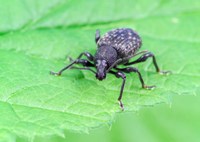
Lab Members
Current PhD and Postgraduate students
- Fikadu Biru
- Jamie Waterman
- Rocky Putra
- Ximena Cibils Stewart
- Tarikul Islam
Past Researchers and PhD Students
- Rhiannon Rowe (MRes, 2018). Principal Supervisor. Does silicon supplementation affect plant traits that impact the performance and feeding behaviour of cereal aphids?
- Dr Adam Frew - PhD 2016 - Principal Supervisor with Professor Jeff Powell. How the soil environment affects root-feeding scarabs with particular emphasis on the canegrub (Sugar Research Australia) –
- Dr Sarah Facey - PhD 2016 - Principal Supervisor with Professor David Ellsworth and Dr Jo Staley (CEH, UK). Resilience versus decline: precipitation and atmospheric change drive contrasting responses in invertebrate communities.
- Dr Kirk Barnett - PhD 2016 - Co-supervisor with Professor Sally Power. Hidden herbivory, precarious precipitation and punished pastures: Australia's grasslands under root herbivory and altered rainfall.
- Jenni Kremer (Honours/Masters, 2017) – Principal Supervisor with Professor James Cook and Dr Sabine Nooten. odyguards and Assassins: Bottom up control in ant-aphid mutualism
- Dr James Ryalls - PhD 2017. The impacts of climate change and belowground herbivory on aphids via primary metabolites.
- Dr Andrew Gherlenda – PhD 2016. The effects of CO2 and temperature on Eucalyptus insect herbivores from individuals to communities.
- Dr Aidan Hall – PhD 2016. Ecology and evolution of Cardiaspina psyllids, their endosymbionts and parasitoid wasps
- Dr Ivan Hiltpold (Postdoctoral Research Assistant), ARC Discovery project
- Dr Ruth Wade – PhD 2015. The effect of simulated precipitation change on multi-trophic interactions in a cereal crop.
- Dr James Hourston – PhD 2015. Do mycorrhizal fungi facilitate root defence signalling in belowground predator-prey interactions?
- Dr Carolyn Mitchell (Postdoctoral Research Assistant). Soft fruit entomology research projects funded by HDC and TSB.
- Dr William Hentley (PhD, 2014). The impact of global change on multi-trophic interactions.
- Dr Scott McKenzie (PhD, 2014). An aboveground-belowground herbivore interaction in a woody perennial crop and its response to elevated atmospheric CO2
- Dr Lindsay McMenemy (PhD, 2011). Raspberry viruses manipulate plant-aphid interactions.
- Dr Katy Clark (PhD, 2010). Linking aboveground and belowground insect herbivore interactions: a case study with the vine weevil (Otiorhynchus sulcatus)
Publications
Books
Oghushi, T., Wurst, S. & Johnson, S.N. (2018) Aboveground-belowground Community Ecology, Springer-Verlag, Berlin, Germany
Johnson, S.N. & T.H. Jones eds (2017) Global Climate Change and Terrestrial Invertebrates, Wiley Blackwell, Chichester, UK
Johnson S.N., Murray PJ, (2008) 'Root feeders - an ecosystem perspective', CABI, Wallingford, UK
Johnson, S.N., Hiltpold, I. & Turlings, T.C.J. eds (2013) Behaviour and Physiology of Root Herbivores. Academic Press, London, UK.
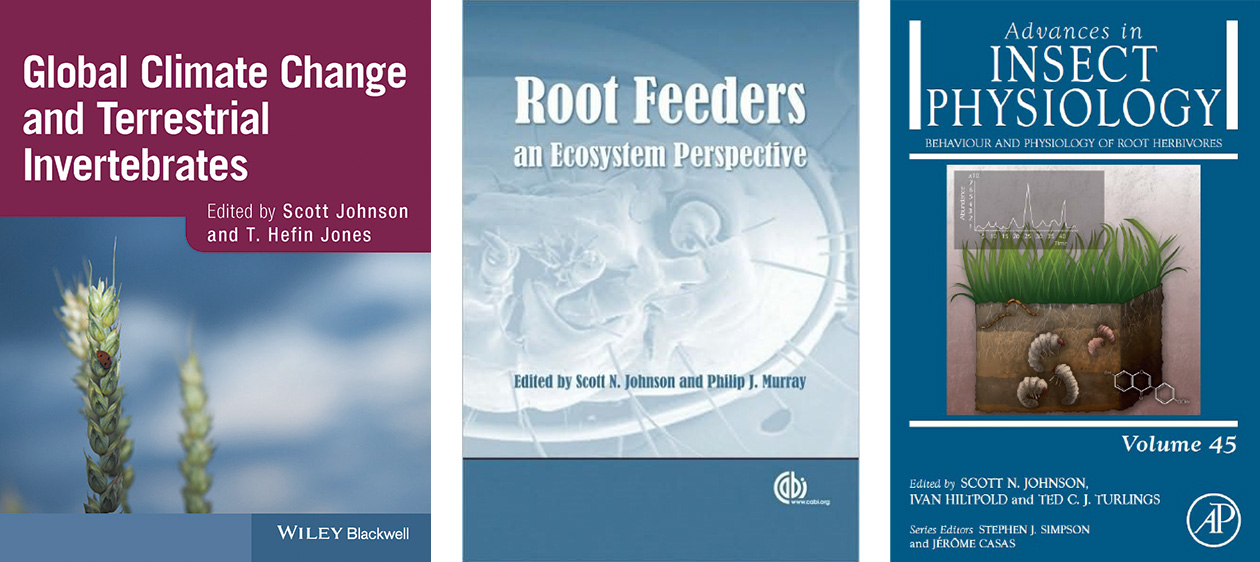
Book Chapters
Johnson SN & Jones TH (2017). Introduction to Global Climate Change and Terrestrial Invertebrates. In Global Climate Change and Terrestrial Invertebrates (ed. by S.N. Johnson & T.H. Jones), pp. 1-8. Wiley-Blackwell, Chichester, UK.
Hiltpold I, Johnson SN, Le Bayon R-C & Nielsen U (2017). Climate change in the underworld: impacts for soil-dwelling invertebrates. In Global Climate Change and Terrestrial Invertebrates (ed. by S.N. Johnson & T.H. Jones), pp. 201-228. Wiley-Blackwell, Chichester, UK.
Johnson SN & Jones TH (2017). Emerging Issues and Future Perspectives for Global Climate Change Studies. In Global Climate Change and Terrestrial Invertebrates (ed. by S.N. Johnson & T.H. Jones), pp. 368-377. Wiley-Blackwell, Chichester, UK.
Johnson SN, Ryalls JMW & Staley JT (2017). Impacts of atmospheric and precipitation change on aboveground-belowground invertebrate interactions. In Global Climate Change and Terrestrial Invertebrates (ed. by S.N. Johnson & T.H. Jones), pp. 229-251. Wiley-Blackwell, Chichester, UK.
Johnson SN, Hiltpold I, Turlings TCJ, (2013) 'Advances in Insect Physiology' in Behaviour and Physiology of Root Herbivores, Preface, (ed. by Johnson SN, Hiltpold I, Turlings TCJ), vol.45, pp IX-X, Elsevier Academic Press Inc, San Diego, CA
Johnson SN, Bezemer TM, Jones TH, (2008) 'Linking aboveground and belowground herbivor, in Root Feeders - an ecosystem perspective' (ed. by S.N.Johnson & P.J. Murray), pp. 153-170. CABI, Wallingford, UK
Mankin RW, Johnson SN, Grinev DV, Gregory PJ (2008) 'New experimental techniques for studying root herbivory', in Root Feeders - an ecosystem perspective (ed. by S.N. Johnson & P.J. Murray), pp. 20-32. CABI, Wallingford, UK
Staley JT, Johnson SN, (2008) 'Climate change impacts on root herbivores', in Root Feeders - an ecosystem perspective (ed. by S.N. Johnson & P.J. Murray), pp. 192-213. CABI, Wallingford, UK
Hartley SE, Bass KA, Johnson SN, (2007) 'Going with the flow: plant vascular systems mediate indirect interactions between plants, insect herbivores and hemi-parasitic plants', in Ecological communities: plant mediation in indirect interactions (ed. by T. Oghushi, T.P. Craig & P.W. Price). Cambridge University Press, Cambridge, U.K
Refereed Papers
Cibils-Stewart X, Putra R, Islam T, Fanna DJ, Wuhrer R, Mace WJ, Hartley SE, Popay AJ, Johnson SN, (2023) 'Silicon and Epichloë-endophyte defences in a model temperate grass diminish feeding efficiency and immunity of an insect folivore', Functional Ecology, vol.37, no.12, pp 3177-3192
de Tombeur F, Raven JA, Toussaint A, Lambers H, Cooke J, Hartley SE, Johnson SN, Coq S, Katz O, Schaller J, Violle C, (2023) 'Why do plants silicify?', Trends in Ecology & Evolution, vol.38, no.3, pp 275-288
Johnson SN, Barton CVM, Biru FN, Islam T, Mace WJ, Rowe RC, Cibils–Stewart X, (2023) 'Elevated atmospheric CO2 suppresses silicon accumulation and exacerbates endophyte reductions in plant phosphorus', Functional Ecology, vol.37, no.6, pp 1567 - 1579
Johnson SN, Vandegeer RK, Borevitz JO, Hartley SE, Tissue DT, Hall CR, (2023) 'Climatic Drivers of Silicon Accumulation in a Model Grass Operate in Low- but Not High-Silicon Soils', Plants, vol.12, no.5, Article no.995
Ryalls JMW, Gherlenda AN, Rowe RC, Moore BD, Johnson SN, (2023) 'Silicon supplementation and jasmonate activation synergistically increase phenolic defences against a legume herbivore', Journal of Ecology, vol.111, no.10, pp 2208-2217
Biru FN, Cazzonelli CI, Elbaum R, Johnson SN, (2022) 'Contrasting impacts of herbivore induction and elevated atmospheric CO2 on silicon defences and consequences for subsequent herbivores', Entomologia Experimentalis et Applicata vol.170, no.8, pp 681-688
Brenya E, Pervin M, Chen Z, Tissue D, Johnson SN, Braam J, Cazzonelli CI, (2022) 'Mechanical stress acclimation in plants: Linking hormones and somatic memory to thigmomorphogenesis', Plant Cell and Environment, nol.45, no.4, pp 989-1010
Cibils-Stewart X, Mace WJ, Popay AJ, Lattanzi FA, Hartley SE, Hall CR, Powell JR, Johnson SN, (2022) 'Interactions between silicon and alkaloid defences in endophyte-infected grasses and the consequences for a folivore', Functional Ecology, vol.36, no.1, pp 249-261
Frew A, Antunes PM, Cameron DD, Hartley SE, Johnson SN, Rillig MC, Bennett AE, (2022) 'Plant herbivore protection by arbuscular mycorrhizas: a role for fungal diversity?', New Phytologist, vol.233, no.3, pp 1022-1031
Islam T, Moore BD, Johnson SN, (2022) 'Silicon suppresses a ubiquitous mite herbivore and promotes natural enemy attraction by altering plant volatile blends', Journal of Pest Science, vol.95, pp 423-434
Islam T, Moore BD, Johnson SN, (2022) 'Plant silicon defences reduce the performance of a chewing insect herbivore which benefits a contemporaneous sap-feeding insect', Ecological Entomology, vol.47, no.6, pp 951-958
Johnson SN, Chen Z-H, Rowe RC, Tissue DT, (2022) 'Field application of silicon alleviates drought stress and improves water use efficiency in wheat', Frontiers in Plant Science, vol.13, Article no.1030620
Johnson SN, Cibils-Stewart X, Waterman JM, Biru FN, Rowe RC, Hartley SE, (2022) 'Elevated atmospheric CO 2 changes defence allocation in wheat but herbivore resistance persists', Proceedings of the Royal Society B: Biological Sciences, vol.289, no.1969, Article no.20212536
Johnson SN, Powell JR, Frew A, Cibils-Stewart X, (2022) 'Silicon accumulation suppresses arbuscular mycorrhizal fungal colonisation in the model grass Brachypodium distachyon', Plant and Soil, vol.477, no.s 1-2, pp 219-232
Putra R, Waterman JM, Mathesius U, Wojtalewicz D, Powell JR, Hartley SE, Johnson SN, (2022) 'Benefits of silicon-enhanced root nodulation in a model legume are contingent upon rhizobial efficacy', Plant and Soil, vol.477, pp 201–217
Wade RN, Donaldson SM, Karley AJ, Johnson SN, Hartley SE, (2022) 'Uptake of silicon in barley under contrasting drought regimes', Plant and Soil, vol.477, no.s 1-2, pp 69-81
Barnett KL, Johnson SN, Facey SL, Gibson-Forty EVJ, Ochoa-Hueso R, Power SA, (2021) 'Altered precipitation and root herbivory affect the productivity and composition of a mesic grassland', BMC Ecology and Evolution, vol.21, no.1, Article no.145
Biru FN, Islam T, Cibils-Stewart X, Cazzonelli CI, Elbaum R, Johnson SN, (2021) 'Anti-herbivore silicon defences in a model grass are greatest under Miocene levels of atmospheric CO2', Global Change Biology, vol.27, no.12, pp 2959-2969
Hall CR, Rowe RC, Mikhael M, Read E, Hartley SE, Johnson SN, (2021) 'Plant silicon application alters leaf alkaloid concentrations and impacts parasitoids more adversely than their aphid hosts', Oecologia, vol.196, no.1, pp 145 - 154
Johnson SN, Hartley SE, Moore BD, (2021) 'Silicon Defence in Plants: Does Herbivore Identity Matter?', Trends in Plant Science, vol.26, no.2, pp 99-101
Johnson SN, Hartley SE, Ryalls JMW, Frew A, Hall CR, (2021) 'Targeted plant defense: silicon conserves hormonal defense signaling impacting chewing but not fluid‐feeding herbivores', Ecology, vol.102, no.3, e03250
Putra R, Vandegeer RK, Karan S, Powell JR, Hartley SE, Johnson SN, (2021) 'Silicon enrichment alters functional traits in legumes depending on plant genotype and symbiosis with nitrogen-fixing bacteria', Functional Ecology, vol.35, no.12, pp 2856-2869
Vandegeer RK, Cibils-Stewart X, Wuhrer R, Hartley SE, Tissue DT, Johnson SN, (2021) 'Leaf silicification provides herbivore defence regardless of the extensive impacts of water stress', Functional Ecology, vol.35, no.6, pp 1200-1211
Vandegeer RK, Zhao C, Cibils-Stewart X, Wuhrer R, Hall CR, Hartley SE, Tissue DT, Johnson SN, (2021) 'Silicon deposition on guard cells increases stomatal sensitivity as mediated by K+ efflux and consequently reduces stomatal conductance', Physiologia Plantarum, vol.171, no.3, pp 358-370
Waterman JM, Cibils-Stewart X, Cazzonelli CI, Hartley SE, Johnson SN, (2021) 'Short-term exposure to silicon rapidly enhances plant resistance to herbivory', Ecology, vol.102, no.9, Article no.e03438
Waterman JM, Hall CR, Mikhael M, Cazzonelli CI, Hartley SE, Johnson SN, (2021) 'Short-term resistance that persists: Rapidly induced silicon anti-herbivore defence affects carbon-based plant defences', Functional Ecology, vol.35, no.1, pp 82-92
Biru FN, Cazzonelli CI, Elbaum R, Johnson SN, (2020) 'Contrasting effects of Miocene and Anthropocene levels of atmospheric CO2 on silicon accumulation in a model grass', Biology letters, vol.16, no.11, p 20200608
Cibils-Stewart X, Powell JR, Popay AJ, Lattanzi FA, Hartley SE, Johnson SN, (2020) 'Reciprocal Effects of Silicon Supply and Endophytes on Silicon Accumulation and Epichloë Colonization in Grasses', Frontiers in Plant Science, vol.11, Article no.593198
Frew A, Powell JR, Johnson SN, (2020) 'Aboveground resource allocation in response to root herbivory as affected by the arbuscular mycorrhizal symbiosis', Plant and Soil, vol.447, no.s 1-2, pp 463-473
Hall CR, Dagg V, Waterman JM, Johnson SN, (2020) 'Silicon alters leaf surface morphology and suppresses insect herbivory in a model grass species', Plants, vol.9, no.5, Article no.643
Hall CR, Mickhael M, Hartley SE, Johnson SN, (2020) 'Elevated atmospheric CO2 suppresses jasmonate and silicon-based defences without affecting herbivores', Functional Ecology, vol.34, pp 993-1002
Hiltpold I, Moore BD, Johnson SN, (2020) 'Elevated atmospheric carbon dioxide concentrations alter root morphology and reduce the effectiveness of entomopathogenic nematodes', Plant and Soil, vol.447, pp 29-38
Islam T, Moore BD, Johnson SN, (2020) 'Novel evidence for systemic induction of silicon defences in cucumber following attack by a global insect herbivore', Ecological Entomology, vol.45, no.6, pp 1373-1381
Jiang M, Medlyn BE, Drake JE, Duursma RA, Anderson IC, Barton CVM, Boer MM, Carrillo Y, Castaneda-Gomez L, Collins L, Crous KY, De Kauwe MG, dos Santos BM, Emmerson KM, Facey SL, Gherlenda AN, Gimeno TE, Hasegawa S, Johnson SN, Kannaste A, Macdonald CA, Mahmud K, Moore BD, Nazaries L, Neilson EHJ, Nielsen UN, Niinemets U, Noh NJ, Ochoa-Hueso R, Pathare VS, Pendall E, Pihlblad J, Pineiro J, Powell JR, Power SA, Reich PB, Renchon AA, Riegler M, Rinnan R, Rymer PD, Salomon RL, Singh BK, Smith B, Tjoelker MG, Walker JKM, Wujeska-Klause A, Yang JY, Zaehle S, Ellsworth DS, (2020) 'The fate of carbon in a mature forest under carbon dioxide enrichment', Nature, vol.580, no.7802, pp 227-231
Johnson SN, Rowe RC, Hall CR, (2020) 'Aphid feeding induces phytohormonal cross-talk without affecting silicon defense against subsequent chewing herbivores', Plants, vol.9, no.8, Article no.1009, pp 1-12
Johnson SN, Rowe RC, Hall CR, (2020) 'Silicon is an inducible and effective herbivore defence againstHelicoverpa punctigera(Lepidoptera: Noctuidae) in soybean', Bulletin of Entomological Research, vol.110, no.3, pp 417-422
Johnson SN, Waterman JM, Hall CR, (2020) 'Increased insect herbivore performance under elevated CO2 is associated with lower plant defence signalling and minimal declines in nutritional quality', Scientific Reports, vol.10, no.1, Article no.14553
Putra R, Powell JR, Hartley SE, Johnson SN, (2020) 'Is it time to include legumes in plant silicon research?' Functional Ecology, vol.34, no.6, pp 1142-1157
Rowe RC, Trebicki P, Gherlenda AN, Johnson SN, (2020) 'Cereal aphid performance and feeding behaviour largely unaffected by silicon enrichment of host plants', Journal of Pest Science, vol.93, no.1, pp 41-48
Vandegeer RK, Tissue DT, Hartley SE, Glauser G, Johnson SN, (2020) 'Physiological acclimation of a grass species occurs during sustained but not repeated drought events', Environmental and Experimental Botany, vol.171, Article no.103954
Waterman JM, Mann TJ, Cazzonelli CI, Hartley SE, Johnson SN, (2020) 'Microbes in Helicoverpa armigera oral secretions contribute to increased senescence around plant wounds', Ecological Entomology, vol.45, no.5, pp 1224-1229
Hall AAG, Johnson SN, Cook JM, Riegler M, (2019) 'High nymphal host density and mortality negatively impact parasitoid complex during an insect herbivore outbreak', Insect Science, vol.26, no.2, pp 351-365
Hall CR, Waterman JM, Vandegeer RK, Hartley SE, Johnson SN, (2019) 'The Role of Silicon in Antiherbivore Phytohormonal Signalling', Frontiers in Plant Science, vol.10, Article no.1132
Johnson SN, Reynolds OL, Gurr GM, Esveld JL, Moore BD, Tory GJ, Gherlenda AN, (2019) 'When resistance is futile, tolerate instead: Silicon promotes plant compensatory growth when attacked by above- And belowground herbivores', Biology Letters, vol.15, no.7, Article no.20190361
Johnson SN, Ryalls JMW, Barton CVM, Tjoelker MG, Wright IJ, Moore BD, (2019) 'Climate warming and plant biomechanical defences: Silicon addition contributes to herbivore suppression in a pasture grass', Functional Ecology, vol.33, no.4, pp 587-596
Waterman JM, Cazzonelli CI, Hartley SE, Johnson SN, (2019) 'Simulated Herbivory: The Key to Disentangling Plant Defence Responses', Trends in Ecology & Evolution, vol.34, no.5, pp 447-458
Barnett KL, Johnson SN, Power SA, (2018) 'Drought negates growth stimulation due to root herbivory in pasture grasses', Oecologia, vol.188, no.3, pp 777-789
Frew A, Powell JR, Glauser G, Bennett AE, Johnson SN, (2018) 'Mycorrhizal fungi enhance nutrient uptake but disarm defences in plant roots, promoting plant-parasitic nematode populations', Soil Biology and Biochemistry, vol.126, pp 123-132
Johnson SN, Glauser G, Hiltpold I, Moore BD, Ryalls JMW, (2018) 'Root herbivore performance suppressed when feeding on a jasmonate-induced pasture grass', Ecological Entomology, vol.43, no.4, pp 547-550
Johnson SN, Hartley SE, (2018) 'Elevated carbon dioxide and warming impact silicon and phenolic-based defences differently in native and exotic grasses', Global Change Biology, vol.24, no.9, pp 3886-3896
Johnson SN, Lopaticki G, Aslam TJ, Barnett K, Frew A, Hartley SE, Hiltpold I, Nielsen UN, Ryalls JMW, (2018) 'Dryland management regimes alter forest habitats and understory arthropod communities', Annals of Applied Biology, vol.172, no.3, pp 282-294
Johnson SN, Ryalls JMW, Gherlenda AN, Frew A, Hartley SE, (2018) 'Benefits from Below: Silicon Supplementation Maintains Legume Productivity under Predicted Climate Change Scenarios', Frontiers in Plant Science, vol.9, Article no.202
Johnson SN, Zust T, (2018) 'Climate Change and Insect Pests: Resistance Is Not Futile?', Trends in Plant Science, vol.23, no.5, pp 367-369
Kremer JMM, Nooten SS, Cook JM, Ryalls JMW, Barton CVM, Johnson SN, (2018) 'Elevated atmospheric carbon dioxide concentrations promote ant tending of aphids', Journal of Animal Ecology, vol.87, no.5, pp 1475-1483
Ryalls JMW, Moore BD, Johnson SN, (2018) 'Silicon uptake by a pasture grass experiencing simulated grazing is greatest under elevated precipitation', BMC Ecology, vol.18, no.1, Article no.53
Ryalls JMW, Moore BD, Johnson SN, Connor M, Hiltpold I, (2018) 'Root responses to domestication, precipitation and silicification: weeping meadow grass simplifies and alters toughness', Plant and Soil, vol.427, no.s 1-2, pp 291-304, Special Issue: SI
Facey SL, Fidler DB, Rowe RC, Bromfield LM, Nooten SS, Staley JT, Ellsworth DS, Johnson SN, (2017) 'Atmospheric change causes declines in woodland arthropods and impacts specific trophic groups', Agricultural and Forest Entomology, vol.19, no.1, pp 101-112
Frew A, Allsopp PG, Gherlenda AN, Johnson SN, (2017) 'Increased root herbivory under elevated atmospheric carbon dioxide concentrations is reversed by silicon-based plant defences', Journal of Applied Ecology, vol.54, no.5, pp 1310-1319
Frew A, Powell JR, Allsopp PG, Sallam N, Johnson SN, (2017) 'Arbuscular mycorrhizal fungi promote silicon accumulation in plant roots, reducing the impacts of root herbivory', Plant and Soil, vol.419, no.s 1-2, pp 423-433
Frew A, Powell JR, Hiltpold I, Allsopp PG, Sallam N, Johnson SN, (2017) 'Host plant colonisation by arbuscular mycorrhizal fungi stimulates immune function whereas high root silicon concentrations diminish growth in a soil-dwelling herbivore', Soil Biology and Biochemistry, vol.112, pp 117-126
Hall AAG, Steinbauer MJ, Taylor GS, Johnson SN, Cook JM, Riegler M, (2017) 'Unravelling mummies: cryptic diversity, host specificity, trophic and coevolutionary interactions in psyllid - parasitoid food webs', BMC Evolutionary Biology, vol.17, no.1, pp 1-15
Johnson SN, Hartley SE, Ryalls JMW, Frew A, DeGabriel JL, Duncan M, Gherlenda AN, (2017) 'Silicon-induced root nodulation and synthesis of essential amino acids in a legume is associated with higher herbivore abundance', Functional Ecology, vol.31, no.10, pp 1903-1909
Johnson SN, Karley AJ, Gregory PJ, Brennan RM, (2017) 'Editorial: Crop Traits for Defense against Pests and Disease: Durability, Breakdown and Future Prospects', Frontiers in Plant Science, vol.8, Article no.209
Moore BD, Johnson SN, (2017) 'Get Tough, Get Toxic, or Get a Bodyguard: Identifying Candidate Traits Conferring Belowground Resistance to Herbivores in Grasses', Frontiers in Plant Science, vol.7, Article 1925
Ryalls JMW, Hartley SE, Johnson SN, (2017) 'Impacts of silicon-based grass defences across trophic levels under both current and future atmospheric CO2 scenarios', Biology Letters, vol.13, no.3, Article no.20160912
Ryalls JMW, Moore B, Riegler M, Bromfield LM, Hall AAG, Johnson SN, (2017) 'Climate and atmospheric change impacts on sap-feeding herbivores: a mechanistic explanation based on functional groups of primary metabolites', Functional Ecology, vol.31, no.1, pp 161-171
Wade RN, Karley AJ, Johnson SN, Hartley SE, (2017) 'Impact of predicted precipitation scenarios on multitrophic interactions', Functional Ecology, vol.31, no.8, pp 1647-1658
Frew A, Barnett K, Riegler M, Nielsen UN, Johnson SN, (2016) 'Belowground ecology of scarabs feeding on grass roots: current knowledge and future directions for management in Australasia', Frontiers in Plant Science, vol.7, p 321
Frew A, Powell JR, Sallam N, Allsopp PG, Johnson SN, (2016) 'Trade-Offs between Silicon and Phenolic Defenses may Explain Enhanced Performance of Root Herbivores on Phenolic-Rich Plants', Journal of Chemical Ecology, vol.42, no.8, pp 768-771
Gherlenda AN, Crous KY, Moore BD, Haigh AM, Johnson SN, Riegler M, (2016) 'Precipitation, not CO2 enrichment, drives insect herbivore frass deposition and subsequent nutrient dynamics in a mature Eucalyptus woodland', Plant and Soil, vol.399, no.s 1-2, pp 29-39
Gherlenda AN, Haigh AM, Moore BD, Johnson SN, Riegler M, (2016) 'Climate change, nutrition and immunity: Effects of elevated CO2 and temperature on the immune function of an insect herbivore', Journal of Insect Physiology, vol.85, pp 57-64
Gherlenda AN, Moore BD, Haigh AM, Johnson SN, Riegler M, (2016) 'Insect herbivory in a mature Eucalyptus woodland canopy depends on leaf phenology but not CO2 enrichment', BMC Ecology, vol.16, Article no.47
Hall AA, Morrow JL, Fromont C, Steinbauer MJ, Taylor GS, Johnson SN, Cook JM, Riegler M, (2016) 'Codivergence of the primary bacterial endosymbiont of psyllids versus host switches and replacement of their secondary bacterial endosymbionts', Environmental Microbiology, vol.18, no.8, pp 2591-2603
Hentley WT, Vanbergen AJ, Beckerman AP, Brien MN, Hails RS, Jones TH, Johnson SN, (2016) 'Antagonistic interactions between an invasive alien and a native coccinellid species may promote coexistence', Journal of Animal Ecology, vol.85, no.4, pp 1087-1097
Hiltpold I, Moore BD, Johnson SN, (2016) 'Novel In vitro procedures for rearing a root-feeding pest (Heteronychus arator) of grasslands', Frontiers in Plant Science, vol.7, Article no. 1316
Hourston JE, Bennett AE, Johnson SN, Gange AC, (2016) 'Does the Slow-Growth, High-Mortality Hypothesis Apply Below Ground?', Plos One, vol.11, no.8, Article no.e0161904
Johnson SN, Benefer CM, Frew A, Griffiths BS, Hartley SE, Karley AJ, Rasmann S, Schumann M, Sonnemann I, Robert CAM, (2016) 'New frontiers in belowground ecology for plant protection from root-feeding insects', Applied Soil Ecology, vol.108, pp 96-107
Johnson SN, Erb M, Hartley SE, (2016) 'Roots under attack: contrasting plant responses to below- and aboveground insect herbivory', New Phytologist, vol.210, no.2, pp 413-418
Johnson SN, Gherlenda AN, Frew A, Ryalls JMW, (2016) 'The importance of testing multiple environmental factors in legume–insect research: Replication, reviewers, and rebuttal', Frontiers in Plant Science, vol.7, Article no.489
Johnson SN, Lopaticki G, Barnett K, Facey SL, Powell JR, Hartley SE, (2016) 'An insect ecosystem engineer alleviates drought stress in plants without increasing plant susceptibility to an above-ground herbivore', Functional Ecology, vol.30, no.6, pp 894-902
Karley AJ, Mitchell C, Brookes C, McNicol J, O'Neill T, Roberts H, Graham J, Johnson SN, (2016) 'Exploiting physical defence traits for crop protection: leaf trichomes of Rubus idaeus have deterrent effects on spider mites but not aphids', Annals of Applied Biology, vol.168, no.2, pp 159-172
McKenzie SW, Johnson SN, Jones TH, Ostle NJ, Hails RS, Vanbergen AJ, (2016) 'Root herbivores drive changes to plant primary chemistry, but root loss is mitigated under elevated atmospheric CO2', Frontiers in Plant Science, vol.7, Article no.837
Power SA, Barnett KL, Ochoa-Hueso R, Facey SL, Gibson-Forty EVJ, Hartley SE, Nielsen UN, Tissue DT, Johnson SN, (2016) 'DRI-Grass: A new experimental platform for addressing grassland ecosystem responses to future precipitation scenarios in South-East Australia', Frontiers in Plant Science, vol.7, Article no.1373
Ryalls JMW, Moore BD, Riegler M, Johnson SN, (2016) 'Above-belowground herbivore interactions in mixed plant communities are influenced by altered precipitation patterns', Frontiers in Plant Science, vol.7, Article no.345
Torode MD, Barnett KL, Facey SL, Nielsen UN, Power SA, Johnson SN, (2016) 'Altered precipitation impacts on above-and below-ground grassland invertebrates: Summer drought leads to outbreaks in spring', Frontiers in Plant Science, vol.7, Article no.1468
Aslam TJ, Benton TG, Nielsen UN, Johnson SN, (2015) 'Impacts of eucalypt plantation management on soil faunal communities and nutrient bioavailability: trading function for dependence?', Biology and Fertility of Soils, vol.51, no.5, pp 637-644
Hall AG, Gherlenda AN, Hasegawa S, Johnson SN, Cook JM, Riegler M, (2015) 'Anatomy of an outbreak: the biology and population dynamics of a Cardiaspina psyllid species in an endangered woodland ecosystem', Agricultural and Forest Entomology, vol.17, no.3, pp 292-301
Johnson SN, Rasmann S, (2015) 'Root-feeding insects and their interactions with organisms in the rhizosphere', Annual Review of Entomology, vol.60, pp 517-535
Ryalls JMW, Moore BD, Riegler R, Gherlenda AN, Johnson SN, (2015) 'Amino acid-mediated impacts of elevated carbon dioxide and simulated root herbivory on aphids are neutralized by increased air temperatures' Journal of Experimental Botany, vol.66, no.2, pp 613-623
A'Bear AD, Johnson SN, Jones TH, (2014) 'Putting the 'upstairs-downstairs' into ecosystem service: What can aboveground-belowground ecology tell us?', Biological Control, vol.75, pp 97-107
Facey SL, Ellsworth DS, Staley JT, Wright D, Johnson SN, (2014) 'Upsetting the order: how climate and atmospheric change affects herbivore-enemy interactions', Current Opinion in Insect Science, vol.5, pp 66-74
Gherlenda AN, Haigh AM, Moore BD, Johnson SN, Riegler M, (2014) 'Responses of leaf beetle larvae to elevated [CO2] and temperature depend on Eucalyptus species', Oecologia, vol.177, no.2, pp 607-617
Hentley WT, Hails RS, Johnson SN, Jones TH, Vanbergen AJ, (2014) 'Top-down control by Harmonia axyridis mitigates the impact of elevated atmospheric CO2 on a plant-aphid interaction', Agricultural and Forest Entomology, vol.16, no.4, pp 350-358
Hentley WT, Vanbergen AJ, Hails RS, Jones TH, Johnson SN, (2014) 'Elevated Atmospheric CO2 Impairs Aphid Escape Responses to Predators and Conspecific Alarm Signals', Journal of Chemical Ecology, vol.40, no.10, pp 1110-1114
Johnson SN, (2014) 'Editorial overview: Global change biology: Which little things will run the world in the future?' Current Opinion in Insect Science, vol.5, no.1, Pages VI-VII
Johnson SN, Lopaticki G, Hartley SE, (2014) 'Elevated Atmospheric CO2 Triggers Compensatory Feeding by Root Herbivores on a C-3 but Not a C-4 Grass', Plos One, vol.9, no.3, Article no.e90251
Johnson SN, Ryalls JMW, Karley AJ, (2014) 'Global climate change and crop resistance to aphids: contrasting responses of lucerne genotypes to elevated atmospheric carbon dioxide', Annals of Applied Biology, vol.165, no.1, pp 62-72
Langford EA, Nielsen UN, Johnson SN, Riegler M, (2014) 'Susceptibility of Queensland fruit fly, Bactrocera tryoni (Froggatt) (Diptera: Tephritidae), to entomopathogenic nematodes', Biological Control, vol.69, pp 34-39
Ode PJ, Johnson SN, Moore BD, (2014) 'Atmospheric change and induced plant secondary metabolites — are we reshaping the building blocks of multi-trophic interactions?', Current Opinion in Insect Science, vol.5, pp 57–65
Barnett K, Johnson SN, (2013) 'Living in the Soil Matrix: Abiotic Factors Affecting Root Herbivores', Advances in Insect Physiology, vol.45, pp 1-52
Aslam TJ, Johnson SN, Karley AJ, (2013) 'Plant-mediated effects of drought on aphid population structure and parasitoid attack', Journal of Applied Entomology, vol.137, no.1-2, pp 136-145
Bennett AE, Macrae AM, Moore BD, Caul S, Johnson SN, (2013) 'Early Root Herbivory Impairs Arbuscular Mycorrhizal Fungal Colonization and Shifts Defence Allocation in Establishing Plantago lanceolata', PLOS One, vol.8, no.6, Article No.e66053
Frew A, Nielsen UN, Riegler M, Johnson SN, (2013) 'Do eucalypt plantation management practices create understory reservoirs of scarab beetle pests in the soil?', Forest Ecology and Management, vol.306, pp 275-280
Johnson SN, Mitchell C, Mcnicol JW, Thompson J, Karley AJ, (2013) 'Downstairs drivers - root herbivores shape communities of above-ground herbivores and natural enemies via changes in plant nutrients', Journal of Animal Ecology, vol.82, no.5, pp 1021-1030
Johnson SN, Riegler M, (2013) 'Root Damage by Insects Reverses the Effects of Elevated Atmospheric CO2 on Eucalypt Seedlings', PLOS One, vol.8, no.11, article no.e79479
McKenzie SW, Hentley WT, Hails RS, Jones TH, Vanbergen AJ, Johnson SN, (2013) 'Global climate change and above-belowground insect herbivore interactions', Frontiers in Plant Science, vol.4, article no.412
McKenzie SW, Vanbergen AJ, Hails RS, Jones TH, Johnson SN, (2013) 'Reciprocal feeding facilitation between above- and below-ground herbivores', Biology Letters, vol.9, no.5, Article number 20130341
Ryalls JMW, Riegler M, Moore BD, Johnson SN, (2013) 'Biology and trophic interactions of lucerne aphids', Agricultural and Forest Entomology, vol.15, no.4, pp 335-350
Ryalls JM, Riegler M, Moore BD, Lopaticki G, Johnson SN, (2013) 'Effects of elevated temperature and CO2 on aboveground-belowground systems: a case study with plants, their mutualistic bacteria and root / shoot herbivores', Frontiers in Plant Science, vol.4, p 445
Clark KE, Hartley SE, Brennan RM, Jennings SN, McMenemy LS, McNicol JW, Mitchell C, Johnson SN, (2012) 'Effects of cultivar and egg density on a colonizing vine weevil (Otiorhynchus sulcatus) population and its impacts on red raspberry growth and yield', Crop Protection, vol.32, pp 76-82
Clark KE, Hartley SE, Brennan RM, MacKenzie K, Johnson SN, (2012) 'Investigating preference-performance relationships in aboveground-belowground life cycles: a laboratory and field study with the vine weevil (Otiorhynchus sulcatus)', Bulletin of Entomological Research, vol.102, no.1, pp 63-70
Clark KE, Hartley SE, Brennan RM, Mackenzie K, Johnson SN, (2012) 'Oviposition and feeding behaviour by the vine weevil Otiorhynchus sulcatus on red raspberry: Effects of cultivars and plant nutritional status', Agricultural and Forest Entomology, vol.14, no.2, pp 157-163
Huang JH, Liu MQ, Chen FJ, Griffiths BS, Chen XY, Johnson SN, Hu F, (2012) 'Crop resistance traits modify the effects of an aboveground herbivore, brown planthopper, on soil microbial biomass and nematode community via changes to plant performance', Soil Biology & Biochemistry, vol.49, pp 157-166
Johnson SN, Clark KE, Hartley SE, Jones TH, McKenzie SW, Koricheva J, (2012) 'Aboveground-belowground herbivore interactions: a meta-analysis', Ecology, vol.93, no.10, pp 2208-2215
Johnson SN, Nielsen UN, (2012) 'Foraging in the Dark - Chemically Mediated Host Plant Location by Belowground Insect Herbivores', Journal of Chemical Ecology, vol.38, no.6, pp 604-614
Johnson SN, Young MW, Karley AJ, (2012) 'Protected raspberry production alters aphid-plant interactions but not aphid population size', Agricultural and Forest Entomology, vol.14, no.2, pp 217-224
McMenemy LS, Hartley SE, MacFarlane SA, Karley AJ, Shepherd T, Johnson SN, (2012) 'Raspberry viruses manipulate the behaviour of their insect vectors', Entomologia Experimentalis et Applicata, vol.144, no.1, pp 56-68
Clark KE, Hartley SE, Brennan RM, MacKenzie K, Johnson SN, (2011) 'Oviposition and feeding behaviour by the vine weevil (Otiorhynchus sulcatus) on red raspberry (Rubus idaeus): effects of cultivars and plant nutritional status', Agricultural and Forest Entomology, (accepted)
Johnson SN, Barton AT, Clark KE, Gregory PJ, McMenemy LS, Hancock RD, (2011) 'Elevated atmospheric carbon dioxide impairs the performance of root-feeding vine weevils by modifying root growth and secondary metabolites', Global Change Biology, vol.17, no.2, pp 688-695
Johnson SN, Staley JT, McLeod FAL, Hartley SE, (2011) 'Plant-mediated effects of soil invertebrates and summer drought on above-ground multi-trophic interactions', Journal of Ecology, vol.99, no.1, pp 57-65
Clark KE, Hartley SE, Johnson SN, (2011) 'Does mother know best? Parent-offspring conflict in aboveground-belowground herbivore lifecycles', Ecological Entomology, vol.36, no.2, pp 117-124
Coyle DR, Clark KE, Raffa KF, Johnson SN, (2011) 'Prior host feeding experience influences ovipositional but not feeding preference in a polyphagous insect herbivore', Entomologia Experimentalis et Applicata, vol.138, no.2, pp 137-145
Martin P, Johnson SN, (2011) 'Evidence that elevated CO2 reduces resistance to the European large raspberry aphid in some raspberry cultivars', Journal of Applied Entomology, vol.135, no.3, pp 237-240
Mitchell C, Brennan RM, Cross JV, Johnson SN, (2011) 'Arthropod pests of currant and gooseberry crops in the U.K.: their biology, management and future prospects', Agricultural and Forest Entomology, vol.13, no.3, pp 221-237
Newton AC, Johnson SN, Gregory PJ, (2011) - Implications of climate change for diseases, crop yields and food security', Euphytica, vol.179, no.1, pp 3-18
Johnson SN, McNicol JW, (2010) 'Elevated CO2 and aboveground-belowground herbivory by the clover root weevil', Oecologia, vol.162, no.1, pp 209-216
Mitchell C, Johnson SN, Gordon SC, Birch ANE, Hubbard SF, (2010) 'Combining plant resistance and a natural enemy to control Amphorophora idaei', Biocontrol, vol.55, no.3, pp 321-327
Johnson SN, Petitjean S, Clark KE, Mitchell C, (2010) 'Protected raspberry production accelerates onset of oviposition by vine weevils (Otiorhynchus sulcatus)', Agricultural and Forest Entomology, vol.12, no.3, pp 277-283
Johnson SN, Hallett PD, Gillespie TL, Halpin C, (2010) 'Belowground herbivory and root toughness: a potential model system using lignin-modified tobacco', Physiological Entomology, vol.35, no.2, pp 186-191
Johnson SN, Gregory PJ, McNicol JW, Oodally Y, Zhang X, Murray PJ, (2010) 'Effects of soil conditions and drought on egg hatching and larval survival of the clover root weevil (Sitona lepidus)', Applied Soil Ecology, vol.44, no.1, pp 75-79
Murray PJ, Gregory PJ, Granger S, Headon DM, Johnson SN, (2010) 'Dispersal of soil-dwelling clover root weevil (Sitona lepidus Gyllenhal; Coleoptera: Curculionidae) larvae in mixed plant communities', Applied Soil Ecology, vol.46, no.3, pp 422-425
Johnson SN, Hawes C, Karley AJ, (2009) 'Reappraising the role of plant nutrients as mediators of interactions between root- and foliar-feeding insects', Functional Ecology, vol.23, no.4, pp 699-706
McMenemy LS, Mitchell C, Johnson SN, (2009) 'Biology of the European large raspberry aphid (Amphorophora idaei): its role in virus transmission and resistance breakdown in red raspberry', Agricultural and Forest Entomology, vol.11, no.1, pp 61-71
Gregory PJ, Johnson SN, Newton AC, Ingram JSI, (2009) 'Integrating pests and pathogens into the climate change/food security debate', Journal of Experimental Botany, vol.60, no.10, pp 2827-2838
Johnson SN, Anderson A, Dawson G, Griffiths DW, (2008) 'Varietal susceptibility of potatoes to wireworm herbivory', Agricultural and Forest Entomology, vol.10, no.2, pp 167-174
Johnson SN, Crawford JW, Gregory PJ, Grinev DV, Mankin RW, Masters GJ, Murray PJ, Wall DH, Zhang XX, (2007) 'Non-invasive techniques for investigating and modelling root-feeding insects in managed and natural systems', Agricultural and Forest Entomology, vol.9, no.1, pp 39-46
Johnson SN, Zhang X, Crawford JW, Gregory PJ Young IM, (2007) 'Egg hatching and survival time of soil-dwelling insect larvae: a partial differential equation model and experimental validation', Ecological Modelling, vol.202, nos.3-4, pp 493-502
Zhang X, Johnson SN, Crawford JW, Gregory PJ, Young IM, (2007) 'A general random walk model for the leptokurtic distribution of organism movement: theory and application', Ecological Modelling, vol.200, nos.1-2, pp 79-88
Johnson SN, Zhang XX, Crawford JW, Gregory PJ, Hix NJ, Jarvis SJ, Murray PJ, Young IM, (2006) 'Effects of CO2 on the searching behaviour of the root-feeding clover weevil', Bulletin of Entomological Research, vol.96, no.4, pp 361-366
Zhang X, Johnson SN, Gregory PJ, Crawford JW, Young IM, Murray PJ, Jarvis SC, (2006) 'Modelling the movement and survival of the root-feeding clover weevil, Sitona lepidus, in the root-zone of white clover', Ecological Modelling, vol.190, nos.1-2, pp 133-146
Johnson SN, Birch ANE, Gregory PJ, Murray PJ, (2006) 'The 'mother knows best' principle: should soil insects be included in the preference-performance debate?', Ecological Entomology, vol.31, no.4, pp 395-401
Johnson SN, Gregory PJ, (2006) 'Chemically-mediated host-plant location and selection by root-feeding insects', Physiological Entomology, vol.31, no.1, pp 1-13
White Clover (Trifolium repens)Johnson SN, Gregory PJ, Greenham JR, Zhang X, Murray PJ, (2005) 'Attractive properties of an isoflavonoid found in white clover root nodules on the clover root weevil', Journal of Chemical Ecology, vol.31, no.9, pp 2223-2229
Johnson SN, Read DB, Gregory PJ, (2004) 'Tracking larval insect movement within soil using high resolution X-ray microtomography', Ecological Entomology, vol.29, no.1, pp 117-122
Johnson SN, Gregory PJ, Murray PJ, Zhang X, Young IM, (2004) 'Host plant recognition by the root-feeding clover weevil, Sitona lepidus (Coleoptera: Curculionidae)', Bulletin of Entomological Research, vol.94, no.5, pp 433-439
Johnson SN, Elston DA, Hartley SE, (2003) 'Influence of heterogeneity in host plant quality for a birch aphid', Ecological Entomology, vol.28, no.5, pp 533-541
Johnson SN, Douglas AE, Woodward S, Hartley SE, (2003) 'Microbial impacts on plant-herbivore interactions: the indirect effects of a birch pathogen on a birch aphid', Oecologia, vol.134, no.3, pp 381-387
Johnson SN, Mayhew PJ, Douglas AE, Hartley SE, (2002) 'Insects as leaf engineers - can leaf-miners alter leaf structure for birch aphids?', Functional Ecology, vol.16, no.5, pp 575-584
Blackwell A, Johnson SN, (2000) 'Electrophysiological investigation of larval water and potential oviposition chemo-attractants for Anopheles gambiae s.s.', Annals of Tropical Medicine and Parasitology, vol.94, pp 389-398
Awards/Recognition
- Awarded the position of Theme Research Coordinator (Plants, Animals and Interactions) at the HIE, 2019
- Invited to chair the organising committee for the 2017 Ecological Society of Australia conference, 2017
- Vice President of the Royal Entomological Society, 2010-2011
- Honorary Lecturer at the University of Dundee
- Fellow (FRES) and Trustee of the Royal Entomological Society
- Associate Editor, Ecological Entomology
- President of the European Congresses of Entomology, 2010-2014
- Deputy Chair of British Ecological Society Meetings, 2004-2009
- Stapledon Research Fellow, 2007
- Awarded the Anne Keymer Prize by the British Ecological Society, 2001
Research Opportunities
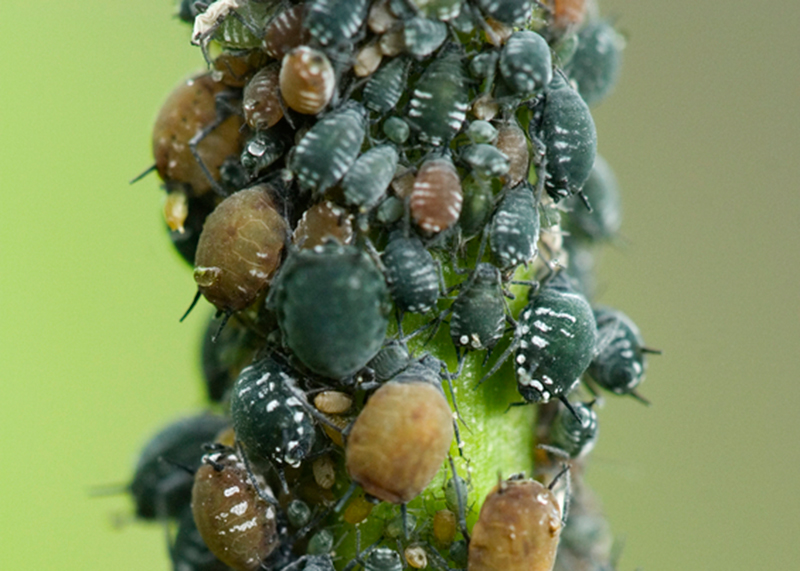
Aphids cluster on a stem. Our research includes investigating insects such as aphids and how they respond under conditions such as elevated CO2.
"Little things that run the world" is how the biologist E.O. Wilson described invertebrates.
There is a great deal of truth in this, with invertebrates playing major roles in the functioning and processes of most terrestrial and aquatic ecosystems.
Besides humankind, invertebrates shape the world around us perhaps more than any other group and their response to global climate change is therefore pivotal in future global challenges, including food security, conservation, biodiversity and human health.
We welcome enquiries from undergraduate and postgraduate students about research opportunities in our areas of research.
These range from short-medium term research placements, Honours / Masters projects to PhD scholarships.
Funding opportunities arise throughout the year, so please make contact in good time to maximise your chances of success.
Example projects include:
Why it sucks being an aphid in a high CO2 world?
While sap-sucking aphids are identified as potential beneficiaries of increased atmospheric greenhouse gases such as CO2, much depends on their interactions with other players such as natural enemies and mutualistic partners (e.g. ants).
The limited evidence available suggests when these players are thrown in the mix, the situation becomes much worse for aphids.
We'll aim to incorporate this trophic realism into such research and gain insights into how these interactions shift in the future.
Suggested reading:
- Facey, S.L., Ellsworth, D., Staley, J.T., Wright, D.J. & Johnson, S.N. (2014) 'Upsetting the order: how atmospheric and climate change affects predator-prey interactions' (opens in a new window). Current Opinion in Insect Science, 5, 66-74
- Hentley, W.T., Vanbergen, A.J., Hails, R.S., Jones, T.H. & Johnson, S.N. (2014) 'Elevated atmospheric CO2 impairs aphid escape responses to predators and conspecific alarm signals' (opens in a new window). Journal of Chemical Ecology, 40, 1110-1114
Putting the 'upstairs-downstairs' into ecosystem responses to global climate change?
Traditionally studied separately, it's now recognised that above- and belowground systems are linked via plant-mediated mechanisms.
The effects of global climate change on, say, a root herbivore would therefore have cascading effects on aboveground herbivores and their natural enemies.
Using state-of-the art facilities, this research will identify key drivers and ecosystem engineers in future climates.
Suggested reading:
- Johnson, S.N. & Rasmann, S. (2015) 'Root-feeding insects and their interactions with organisms in the rhizosphere' (opens in a new window). Annual Review of Entomology, 60, 517–535. 1.
- Johnson, S.N., Clark, K.E., Hartley, S.E., Jones, T.H., McKenzie, S.W. & Koricheva, J. (2012) 'Aboveground-belowground herbivore interactions: a meta-analysis' (opens in a new window). Ecology, 93, 2208–2215.
The real Hunger Games – how ladybird and parasitic wasps regulate lucerne aphid populations
Around 30 years ago, Australia's lucerne industry suffered massive losses with the arrival of three exotic aphid pests.
Resistant cultivars and natural enemies have helped control aphids since, but breakdowns in cultivar resistance are increasingly common.
Understanding how natural enemies regulate aphid populations is therefore of pivotal importance.
Suggested reading:
- Ryalls, J.M.W., Riegler, M., Moore, B.D. & Johnson, S.N. (2013) 'Biology and trophic interactions of lucerne aphids' (opens in a new window). Agricultural and Forest Entomology, 15, 335-350.
- Johnson, S.N., Mitchell, C., Thompson, J. & Karley, A.J. (2013) 'Downstairs drivers - root herbivores shape communities of aboveground herbivores and natural enemies via plant nutrients' (opens in a new window). Journal of Animal Ecology, 82, 1021–1030.
